An Overview of GST Migration
Goods and Services Tax (GST) is a comprehensive indirect tax system introduced in India to replace multiple taxes levied by the state and central governments. GST has significantly simplified the taxation process and helped in making India a more business-friendly economy. All businesses registered under the previous tax regime, such as VAT, Service Tax, and Excise, must migrate to GST to continue their business operations. GST migration refers to the process of transitioning from the old tax regime to the new GST regime. It is essential to complete the GST migration process correctly to avoid any legal complications and ensure smooth business operations. At Swarit Advisors, we provide end-to-end assistance in GST migration to help businesses make a seamless transition to the GST regime.
Criteria for GST Migration
Businesses registered under the previous tax regime must fulfill the following criteria to migrate to GST:
- Valid PAN (Permanent Account Number)
- Valid mobile number and email address
- Business registration details (as per the previous tax regime)
- Provisional ID and password received from the tax department
- Bank account details
Benefits of GST Migration
Benefits of GST Migration are as follows:
- Compliance with the law: As per the GST regime, all businesses with an annual turnover of Rs. 20 lakhs or more (Rs. 10 lakhs or more for north-eastern states) are required to register for GST. By migrating to GST, your business will be compliant with the law, avoiding any legal consequences.
- Input tax credit: GST allows businesses to claim input tax credit on the goods and services purchased for business purposes. By migrating to GST, you can claim input tax credit on your previous purchases, which can reduce your tax liability.
- National presence: GST is a national tax system that unifies the taxation across India. By migrating to GST, your business can operate seamlessly across the country without any state-specific tax hurdles.
- Increased efficiency: GST eliminates the cascading effect of taxes and simplifies the tax system, resulting in increased efficiency in business operations. By migrating to GST, you can streamline your tax-related processes and reduce the time and effort spent on tax compliance.
- Improved cash flow: GST is a destination-based tax system that means the tax revenue is received by the state where the final consumption happens. This results in an improved cash flow for businesses as they do not need to pay taxes at every stage of the supply chain.
Required Documents for GST Migration
The following documents are required for GST migration:
- PAN card of the business entity
- Valid proof of address
- Bank statement or a cancelled cheque
- Business registration certificate (as per the previous tax regime)
- Partnership deed (if applicable)
- Certificate of incorporation (in case of companies)
- Identity proof of authorized signatory
- Photograph of authorized signatory
Process for GST Migration
The GST migration process involves the following steps:
- Log in to the GST portal using the provisional ID and password provided by the tax department.
- Verify the business details displayed on the GST portal.
- Provide additional business details, such as bank account information, contact details, and email address.
- Upload the required documents and digitally sign the application.
- Submit the application for GST migration.
Once the application is submitted, the GST department will review the application, and if there are no discrepancies, a GSTIN (Goods and Services Tax Identification Number) will be issued to the business entity.
Validity of GST Migration
GST migration is a one-time process. Once a business has successfully migrated to GST, it can continue its operations under the new tax regime. However, businesses must ensure that they comply with all GST regulations and file GST returns on time to avoid penalties and legal consequences.
Swarit Advisors Support
At Swarit Advisors, we understand that navigating legal processes can be overwhelming, especially for those who are unfamiliar with them. That's why we offer end-to-end support for our clients throughout the process of GST Migration. Our team of legal experts is highly experienced and well-versed in the GST laws and regulations, and they are always available to answer any questions or concerns you may have. We are committed to providing our clients with personalized attention and support, ensuring that they receive the best possible outcomes. Whether you are an individual or a business owner, you can rely on us to provide you with expert guidance and support throughout the entire GST Migration process.
Frequently Asked Questions
All businesses that were registered under the earlier tax laws, such as VAT, Service Tax, and Excise, are required to migrate to GST.
The deadline for GST migration was 31st December 2017. However, businesses that missed this deadline can still migrate to GST by following the necessary procedures.
The documents required for GST migration include the PAN card of the business, registration certificate under the earlier tax laws, and bank account details.
No, there is no fee for GST migration.
Yes, businesses can apply for GST migration online through the GST portal.
If a business fails to migrate to GST, it will not be able to continue its operations as it will not have a valid tax registration.
The process for GST migration involves submitting an online application on the GST portal and providing the necessary documents.
No, businesses that have migrated to GST are not required to obtain a new GST registration.
No, a PAN card is mandatory for GST migration.
Yes, Swarit Advisors provides end-to-end assistance with GST migration, including guidance on the process and assistance with the necessary documents.


